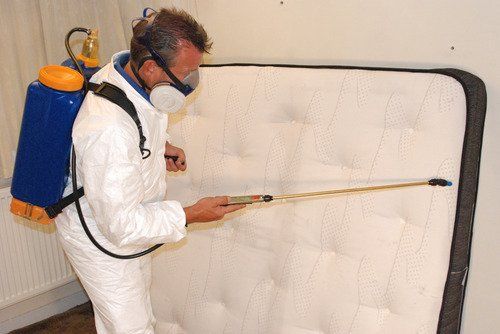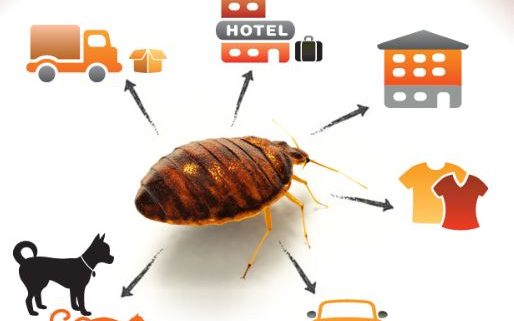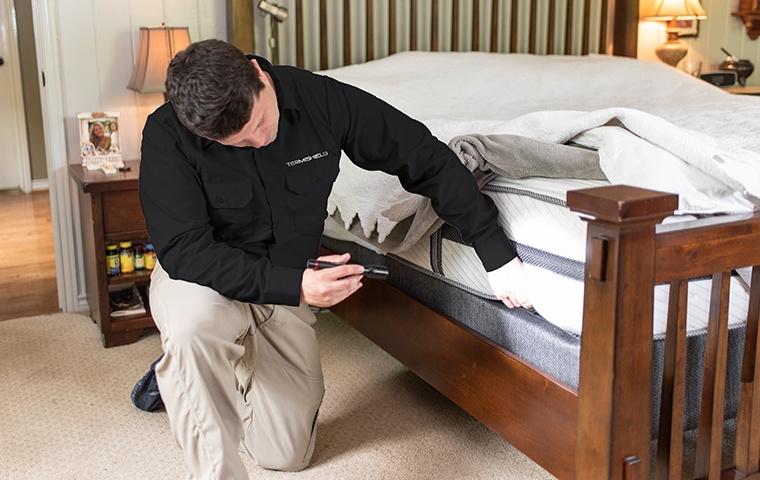Top Kings Cincinnati Bug Control Services: Exterminator Know-how
Wiki Article
Kinds of Bug Control: Which Approach Is Right for Your Problem?
When encountered with a pest invasion, the option of a suitable technique for pest control is critical in properly taking care of the circumstance. By discovering the different types of pest control approaches readily available, people can make informed decisions customized to their unique circumstances, guaranteeing an extra effective and sustainable result in pest obliteration.Chemical Pest Control
Chemical bug control involves making use of synthetic or normally acquired chemicals to handle and eliminate pest populaces efficiently. This method is generally utilized in farming, forestry, and domestic settings to combat a wide variety of pests, consisting of bugs, weeds, and rodents. Using chemical pesticides can provide fast and targeted services to pest problems, making it a popular option for lots of individuals and services.One of the essential advantages of chemical insect control is its capacity to quickly get rid of insects, lowering the risk of damage to crops, home, and human wellness. By utilizing particular chemicals that target specific bugs, this method can effectively manage invasions while reducing harm to valuable microorganisms and the environment when used properly.
However, the use of chemical pest control additionally increases concerns about prospective unfavorable effects on non-target species, water sources, and human health. It is crucial to adhere to safety and security standards, use chemicals properly, and think about alternative bug control methods to lessen these risks and ensure sustainable bug administration techniques.
Biological Parasite Control
Biological insect control, also referred to as biocontrol, uses living microorganisms to handle and lower bug populaces naturally. This approach utilizes the power of nature to control insects without the demand for synthetic chemicals. Biocontrol can entail the introduction of natural opponents of the parasite varieties, such as virus, predators, or parasites, to suppress bug populaces. By utilizing the parasite's natural killers or microorganisms, biological parasite control supplies a lasting and eco pleasant solution to pest management.
Mechanical Bug Control
Using physical and hand-operated techniques to take care of parasite populaces, mechanical parasite control offers an alternative strategy that does not depend on using living organisms or artificial chemicals. This method entails making use of barriers, traps, or other devices to physically prevent or get rid of bugs. By blocking parasite entry points or establishing catches to capture them, mechanical pest control can successfully minimize problems without presenting chemicals right into the environment.One typical example of mechanical parasite control is the use of mesh displays on doors and windows to stop insects from getting in buildings. This basic yet reliable approach works as a physical barrier, keeping insects out while enabling appropriate air flow. Furthermore, devices like mousetraps, fly swatters, and ultrasonic repellents fall under the mechanical pest control group.
While mechanical parasite control approaches can be labor-intensive and need routine tracking and upkeep, they offer a ecologically friendly and sustainable remedy for managing parasite infestations. By combining different mechanical strategies, building proprietors can develop an extensive bug control approach that decreases dependence on chemical pesticides.
Physical Parasite Control

Some usual physical insect control approaches include the use of obstacles such as displays or nets to stop insect entry, traps to record and eliminate bugs, and hand-picking to literally eliminate insects from plants or structures. Additionally, techniques like heat treatments can be used to manage bugs like bed pests by elevating the temperature to degrees that are deadly to the insects.
Physical parasite control is particularly beneficial in incorporated parasite administration (IPM) strategies, where numerous bug control approaches are integrated for effective parasite monitoring while decreasing using chemicals. By utilizing physical insect control techniques, individuals can effectively resolve pest invasions with marginal environmental influence.
Integrated Bug Monitoring
When carrying out physical insect control methods as component of pest administration strategies, Integrated Bug Administration (IPM) arises as find more information a comprehensive approach that leverages various techniques to successfully regulate pest populations. IPM concentrates on long-lasting avoidance of bugs through a combination of biological, cultural, physical, and chemical devices customized to particular bug problems. By integrating multiple control techniques, IPM aims to decrease the dangers related to parasites while also decreasing dependence on chemical services.One secret facet of IPM is the focus on surveillance and evaluating pest populations to figure out one of the most appropriate the best termite treatment control approaches. This aggressive approach permits early intervention and targeted approaches, bring about a lot more efficient bug monitoring. Furthermore, IPM advertises environmentally pleasant methods by focusing on non-chemical control approaches and only making use of pesticides as a last option.
Conclusion

By making use of the bug's all-natural predators or pathogens, biological parasite control offers a sustainable and eco friendly service to pest administration. - Kings exterminator cincinnati
Utilizing physical and hands-on methods to handle bug populaces, mechanical bug control provides an alternative strategy that does not depend on the use of living organisms or artificial chemicals.A reliable strategy to managing parasite populations without counting on chemical or organic techniques entails the use of physical bug control strategies.When implementing physical pest control approaches as part of parasite monitoring techniques, Integrated Parasite Monitoring (IPM) arises as a comprehensive technique that leverages browse around this web-site different techniques to efficiently regulate pest populaces. Chemical pest control involves the usage of chemicals, biological parasite control uses natural killers, mechanical parasite control entails physical barriers, physical bug control includes capturing or getting rid of pests, and incorporated pest management combines numerous methods for an alternative strategy to pest control.
Report this wiki page